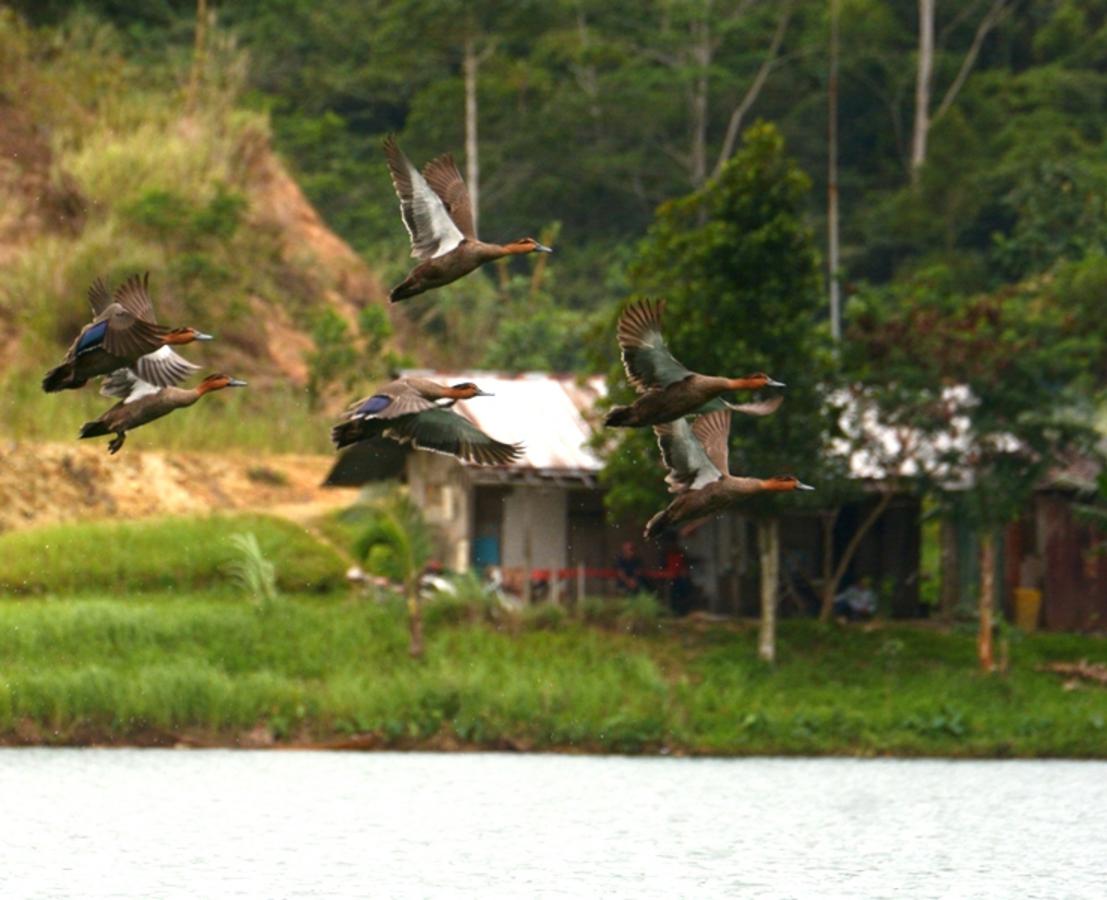Photo: Philippine Ducks (Anas Luzonica), though not classified as “endangered,” are a vulnerable indigenous species that found sanctuary in TVIRD’s tailings dam. At its peak, close to 20 percent of these waterbirds’ total population may have been in Canatuan.
Oftentimes, the silence of TVIRD’s Sulphide Dam is broken only by the loud and successive quacking of the waterbirds that made the company’s Tailings Storage Facility (TSF) its sanctuary for the last seven years. The quacking is then followed by splashing on the calm waters – and one can only surmise that the Philippine Ducks (Anas Luzonica) are thriving!
Visitors of the company are always in awe of the dam’s size – some 34 hectares wide and120 meters deep. The TSF, which was used during the company’s copper-zinc mining operations, is a structural beauty in itself. Surrounded by lush and cool Mt. Canatuan, it looks like a lake with clear, green water. And the presence of the Philippine Ducks makes the man-made lake even more interesting.
Migratory birds
Muhammad Faz Ur Rahman J. Werble, Ecosystem Management Specialist of the DENR’s Community Environment and Natural Resources Office (CENRO) in Siocon, confirmed the presence of the Philippine Ducks at the Sulphide Dam.
“The Philippine Ducks are migratory birds and are endemic to the Philippines,” he said.
Werble has been heading a team of CENRO personnel in conducting the Annual Asian Waterbirds Census for three consecutive years now. He said the reason it is conducted annually is because of the presence of a large number of threatened endemic Philippine Ducks.
“It is possible that the ducks come from nearby areas and chose to stay there because the Sulphide Dam is protected and no hunting is allowed,” he added.
Werble also disclosed that the Philippine Ducks are dependent on wetlands for its food, shelter and breeding ground. It feeds on shrimp, fish, insects, and vegetation, which he believes are abundant in the area.
Vulnerable
According to online sources, Philippine Ducks are large dabbling ducks that “feed mainly at the surface rather than by diving.” They are classified as “vulnerable” because it has a small population and undergoing a rapid continuing decline due to extensive over-hunting and loss of habitats. As few as an estimated 5,000 remain all over the country.
“The Annual Asian Waterbird Census is done every month of January of the year by CENRO Siocon to monitor the number and migration of bird species, including the Philippine Ducks at TVIRD’s dam,” said Werble.
During the first census that he conducted in 2019, Werble said he was happy to count more than 500 Philippine Ducks at the tailings facility. In 2020, its population reached 950 but came down to around 700 in 2021 due to migration. “These birds are a migratory specie. It migrates from one place to another.”
At its peak, close to 20 percent of these waterbirds’ total population may have been in Canatuan. It is also likely that this figure will rise during the next migration.
Other inhabitants
Aside from Philippine Ducks, the TVIRD’s tailings storage facility is often visited by Kingfishers (Alcedo atthis) and Hawk Eagles (Nisaetus Cirrhatus) – which like the Philippine Ducks, also hunt for food there. Different kinds of bats, birds and snakes like the Philippine Cobra also found their home in the surrounding forest area.
Even during the copper-zinc mining operation, the Sulphide Dam is laden with freshwater fish that the Canatuan locals identified as hito (cat fish), kasili (eel) and halwan (mudfish), to name a few.
Tribal leaders in Canatuan agree on the observations of visitors that at the foot of the lush Mt. Canatuan lies a beautiful lake – a refreshing view to anyone who wants to savor the silence of the mountain and its surrounding.
A silence that can only be disturbed by the vigorous quacking sound of the Philippine Ducks that continue to thrive in its new habitat.










